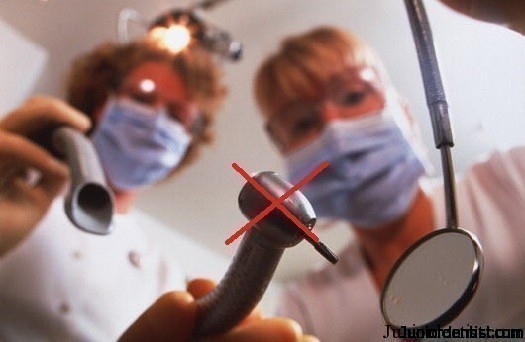Peptide helps to grow back the Decayed tooth structure
Posted on August 29th, 2011 in Dental News
Yes a new discovery has taken the Dental field by storm, there has been a new discovery by a group of Scientists in University of Leeds.
They have successfully used a Fluidto regrow the portion of the tooth which was decayed due to the effect of caries.
Tooth decay begins when acid produced by bacteria in plaque dissolves the mineral in the teeth, causing microscopic holes or ‘pores’ to form. As the decay processprogresses these micro-pores increase in size and number. Eventually the damaged tooth may have to be drilled and filled to prevent toothache, or even removed.
What is this Fluid:
The main reason patients fear a dentist is
Will it be Successful ??
According to Professor Paul Brunton, who is overseeing the patient testing at theUniversity of Leeds Dental Institute:
They have conducted tests on a small group of patients who were having initial caries and the Doctors have noticed that this Peptide has not only stopped the Carious process but Reversed the situation.
He was also Stating: “If these results can be repeated on a larger patient group, then I have no doubt whatsoever that in two to three years time this technique will be available for dentists to use in their daily practice.”
But the main problem can be that if this really works out then what will be the fate of all the restorative material manufacturers,
They have successfully used a Fluidto regrow the portion of the tooth which was decayed due to the effect of caries.
Tooth decay begins when acid produced by bacteria in plaque dissolves the mineral in the teeth, causing microscopic holes or ‘pores’ to form. As the decay processprogresses these micro-pores increase in size and number. Eventually the damaged tooth may have to be drilled and filled to prevent toothache, or even removed.
What is this Fluid:
- This fluid contains a peptide known as P 11-4.
- And it is a Peptide which is said to help in the re calcification of the Tooth structure.
- Developed in the University of Leeds’ School of Chemistry, led by Dr Amalia Aggeli.
- It contains a peptide known as P 11-4
- This Peptide is said to assemble together into fibres in some conditions.
- When applied to the tooth, the fluid seeps into the micro-pores caused by acid attack and then spontaneously forms a gel.
- This gel then provides a ‘scaffold’ or framework that attracts calcium and regenerates the tooth’s mineral from within, providing a natural and pain-free repair.
The main reason patients fear a dentist is
- Dental Drilling
- Local Anesthesia injections in the mouth.
Will it be Successful ??
According to Professor Paul Brunton, who is overseeing the patient testing at theUniversity of Leeds Dental Institute:
They have conducted tests on a small group of patients who were having initial caries and the Doctors have noticed that this Peptide has not only stopped the Carious process but Reversed the situation.
He was also Stating: “If these results can be repeated on a larger patient group, then I have no doubt whatsoever that in two to three years time this technique will be available for dentists to use in their daily practice.”
But the main problem can be that if this really works out then what will be the fate of all the restorative material manufacturers,
- will they let is come out and boom the market ? or
- will they stop it from making a debut in the Clinics ??


No comments:
Post a Comment